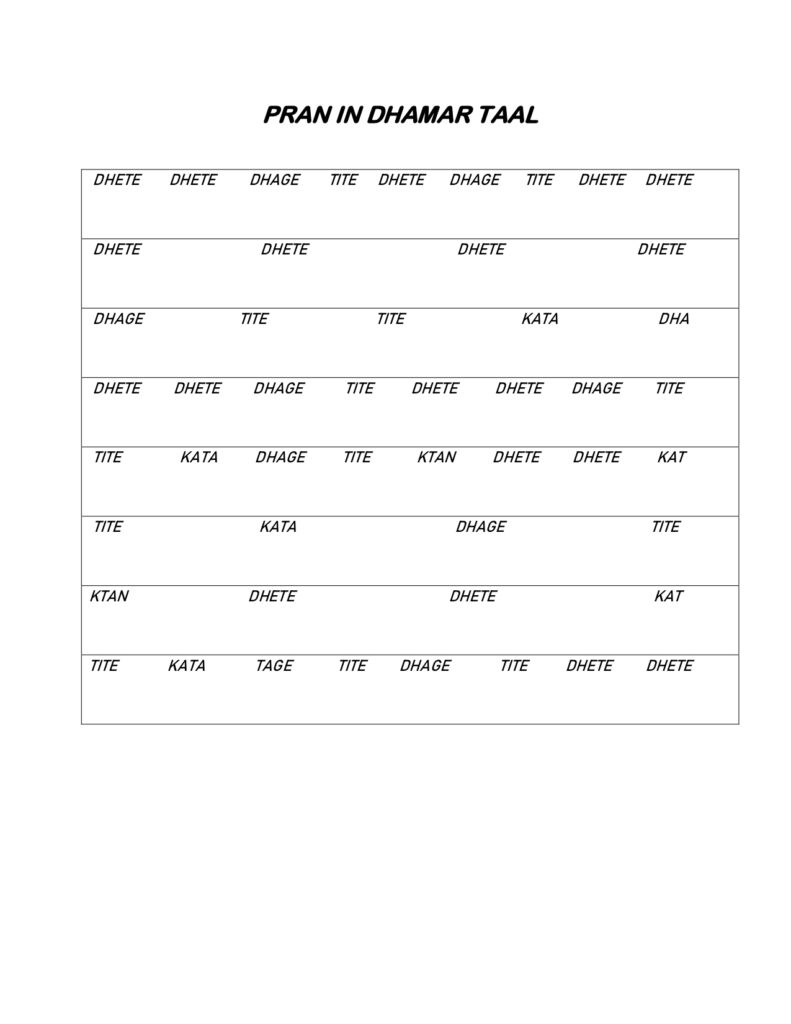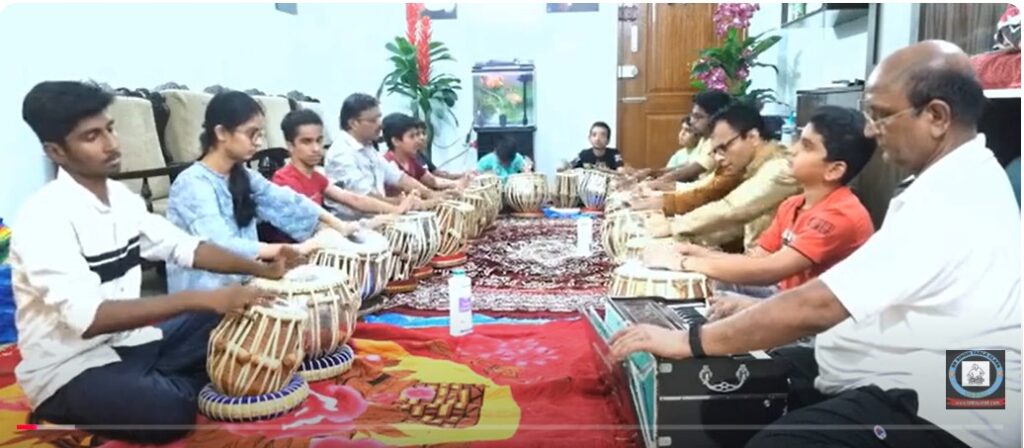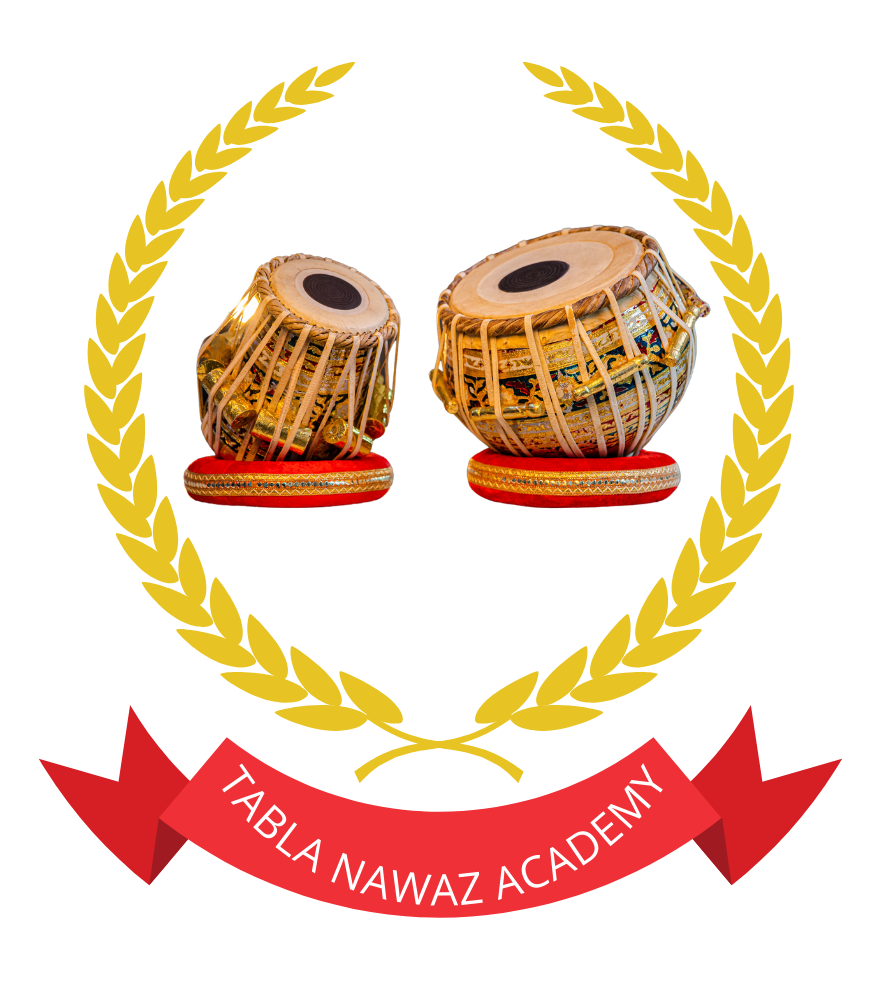In the mesmerizing world of Indian classical music, Dhamar Taal holds a special place, celebrated for its deep connection to the Dhrupad tradition and its association with themes of divinity, nature, and joy. This 14-beat rhythmic cycle is not just a taal—it’s a gateway to understanding the spiritual and aesthetic richness of Indian music.

Dhamar Taal: The Rhythmic Essence of Indian Classical Music
In the mesmerizing world of Indian classical music, Dhamar Taal holds a special place, celebrated for its deep connection to the Dhrupad tradition and its association with themes of divinity, nature, and joy. This 14-beat rhythmic cycle is not just a taal—it’s a gateway to understanding the spiritual and aesthetic richness of Indian music.
Let’s explore Dhamar Taal in depth: its structure, history, and its place in both traditional and modern music.
What is Dhamar Taal?
Dhamar Taal is a 14-beat rhythmic cycle used extensively in the Dhrupad genre of Hindustani classical music. It is divided into four vibhags (sections) of unequal beats: 5-5-4-4, creating a unique interplay of symmetry and asymmetry.
The Structure
| Beats | 1 | 2 | 3 | 4 | 5 | 6 | 7 | 8 | 9 | 10 | 11 | 12 | 13 | 14 |
|---|---|---|---|---|---|---|---|---|---|---|---|---|---|---|
| Vibhags | 5 | 5 | 4 | 4 | ||||||||||
| Claps | Sam (X) | Clap (2) | Khali (0) | Clap (4) |
- Sam (X): The first and most emphasized beat.
- Khali (0): The wave or empty beat that adds contrast to the taal.
Historical Background
The origins of Dhamar Taal are deeply intertwined with the Dhrupad tradition, one of the oldest surviving forms of Indian classical music. Emerging from the Bhakti Movement (14th–17th centuries), Dhrupad used Dhamar Taal as a rhythmic foundation for compositions celebrating Lord Krishna’s divine play, particularly his Holi festivities with Radha and the gopis.
Key Highlights
- Mughal and Rajput Patronage: During the Mughal era, particularly under Emperor Akbar’s reign, Dhamar Taal flourished as part of court performances.
- Festive and Devotional Themes: Songs in Dhamar Taal often depict Holi, spring celebrations, or devotional themes centered around Krishna and Shiva.
The Theka of Dhamar Taal
The theka is the basic tabla pattern that defines the taal. Here’s how Dhamar Taal sounds:
Dha – Ge | Ti – Ta | Dha – S | Dha – Ge | Ti – Ta | Dha – S | Dha – – | Ge – –
This pattern provides a majestic and meditative rhythm, allowing for creative improvisations in classical performances.
Famous Performances and Compositions
Dhrupad Compositions in Dhamar Taal
- “Kanha Re Nand Nandan”: A classic Dhrupad piece celebrating Krishna.
- “Shiva Vandana in Dhamar”: A devotional composition invoking Lord Shiva.
Modern Interpretations
- Tabla virtuosos like Zakir Hussain and Pandit Anindo Chatterjee have incorporated Dhamar Taal into experimental fusion performances.
- Rarely, Bollywood soundtracks use Dhamar Taal to evoke traditional and divine moods.
Interactive Quiz: Test Your Knowledge!
- How many beats does Dhamar Taal have?
A) 12
B) 14
C) 16 - Which classical genre is Dhamar Taal most associated with?
A) Ghazal
B) Dhrupad
C) Khayal - What is the vibhag structure of Dhamar Taal?
A) 4-4-4-4
B) 5-5-4-4
C) 6-6-2
(Answers at the end of the blog!)
Why Learn About Dhamar Taal?
Studying Dhamar Taal isn’t just about learning a rhythm; it’s about connecting with the soul of Indian classical music. The taal embodies a delicate balance of structure and creativity, making it both challenging and rewarding for musicians and listeners alike.
Conclusion: A Rhythmic Legacy
Dhamar Taal continues to thrive in the world of Indian classical music. Whether performed in a traditional Dhrupad setting or reimagined in modern fusion, its hypnotic 14-beat cycle remains timeless.
- Famous compositions in Dhamar Taal
- The significance of Dhamar Taal in Indian music
- Differences between Dhamar Taal and other taals
- Dhrupad genre
- Tabla thekas for classical music
- Indian rhythmic cycles
- Classical music taals
- Spiritual music in Dhamar Taal
https://www.facebook.com/sbsinghtablaguru

